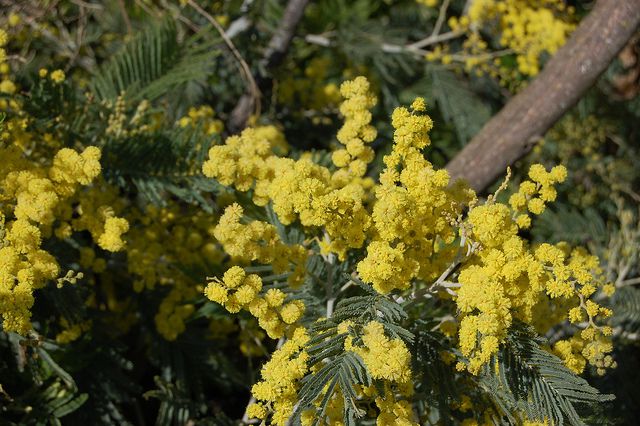-
 Hypersaline water
Hypersaline water
-
 Ester
Ester
-
 Syngas
Syngas
-
 HTML
HTML
-
 JAXA
JAXA
-
 Falcon 1
Falcon 1
-
 Lemon
Lemon
-
 Air pollutant concentrations
Air pollutant concentrations
-
 Force couple
Force couple
-
 POP
POP
-
 Vanograph
Vanograph
-
 Dryas
Dryas
-
 Heavy mud
Heavy mud
-
 Emollient
Emollient
-
 Basic rock
Basic rock
-
 Perigranitic
Perigranitic
-
 Certificate
Certificate
-
 Milky Way
Milky Way
-
 Hydrophile
Hydrophile
-
 SS-18
SS-18
-
 Attitude
Attitude
-
 pH
pH
-
 Ununoctium
Ununoctium
-
 Donders rings
Donders rings
-
 Asymmetric
Asymmetric
-
 African longfin eel
African longfin eel
-
 Ikonos
Ikonos
-
 Coronagraph
Coronagraph
-
 Ramsar Convention
Ramsar Convention
-
 Pulse
Pulse
Mimosa
The mimosa is a small graceful shrub growing to between 8 and 12 m high.

Acacia dealbata. © Mr. Clemanti, by sa 2.0
Names
The mimosa (Acacia dealbata) is a legume that belongs to the Mimosaceae family. It is also called the "silver wattle".
Botanical description of the mimosa
This shrub is quite slender and has many branches. Branches grow from its stock. Its light greyish-green bark turns brown with age. Its persistent leaves measure between 8 and 12 cm, are composed and bipinnate, with 14 to 24 primary divisions including 30 to 50 pairs of 2 mm leaflets which fold at night. This is a hermaphrodite species with small flowers with bright yellow stamens grouped into glomerules. These very fragrant flowers bloom from December to March. The fruit are flat, sea-green pods from 5 to 8 cm long grouped into strings that tend to turn brown at maturity.

The mimosa, a shrub in the Mimosaceae. family© Paul Appleton, nc sa 2.0
Origins
This species grows naturally in Australia and Tasmania. A botanist, Nicolas Baudin, brought back a few plants in the early 1800s as a gift for the Empress Josephine, who planted them in her Malmaison garden near Paris. During the French Second Empire this decorative shrub mostly grew along the French Riviera. Currently it is still mainly found there, as well as in Brittany.
Growing conditions of the mimosa
This species loves heat, at least 3 hours of sun per day, and well-drained soil, i.e. without stagnant water. It prefers sandy soil and does not grow well in very calcareous land.
Use
The mimosa is essentially an ornamental shrub that gives magnificent bouquets at a time of the year when flowers are rare.
Author: Michel Caron
 Mimosa flowers. © FarOutFlora, Flickr CC by nc-nd 2.0
Mimosa flowers. © FarOutFlora, Flickr CC by nc-nd 2.0
Latest
Fill out my online form.



